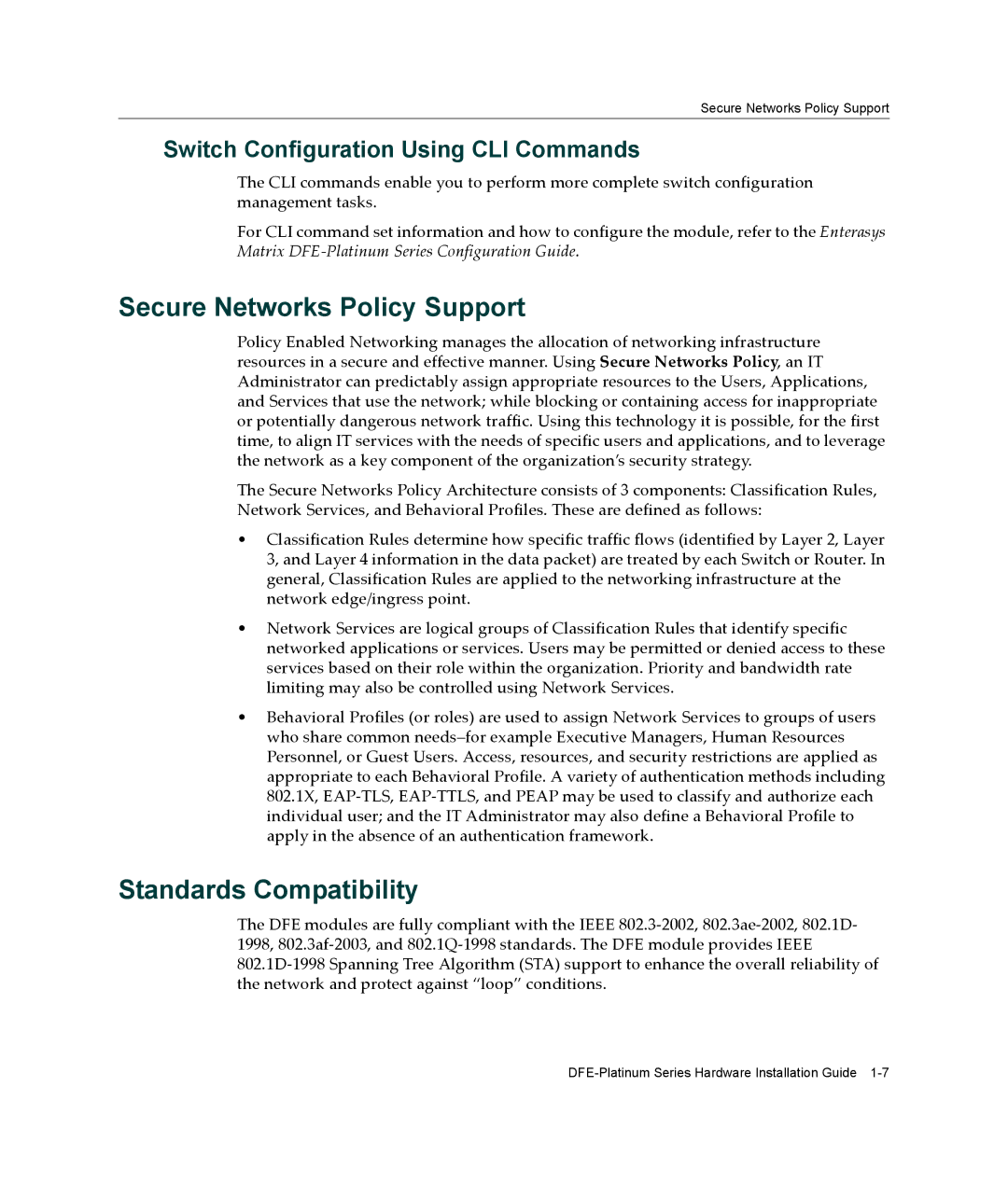Secure Networks Policy Support
Switch Configuration Using CLI Commands
The CLI commands enable you to perform more complete switch configuration management tasks.
For CLI command set information and how to configure the module, refer to the Enterasys Matrix DFE‐Platinum Series Configuration Guide.
Secure Networks Policy Support
Policy Enabled Networking manages the allocation of networking infrastructure resources in a secure and effective manner. Using Secure Networks Policy, an IT Administrator can predictably assign appropriate resources to the Users, Applications, and Services that use the network; while blocking or containing access for inappropriate or potentially dangerous network traffic. Using this technology it is possible, for the first time, to align IT services with the needs of specific users and applications, and to leverage the network as a key component of the organization’s security strategy.
The Secure Networks Policy Architecture consists of 3 components: Classification Rules, Network Services, and Behavioral Profiles. These are defined as follows:
•Classification Rules determine how specific traffic flows (identified by Layer 2, Layer 3, and Layer 4 information in the data packet) are treated by each Switch or Router. In general, Classification Rules are applied to the networking infrastructure at the network edge/ingress point.
•Network Services are logical groups of Classification Rules that identify specific networked applications or services. Users may be permitted or denied access to these services based on their role within the organization. Priority and bandwidth rate limiting may also be controlled using Network Services.
•Behavioral Profiles (or roles) are used to assign Network Services to groups of users who share common
Standards Compatibility
The DFE modules are fully compliant with the IEEE 802.3‐2002, 802.3ae‐2002, 802.1D‐ 1998, 802.3af‐2003, and 802.1Q‐1998 standards. The DFE module provides IEEE
802.1D‐1998 Spanning Tree Algorithm (STA) support to enhance the overall reliability of the network and protect against “loop” conditions.
